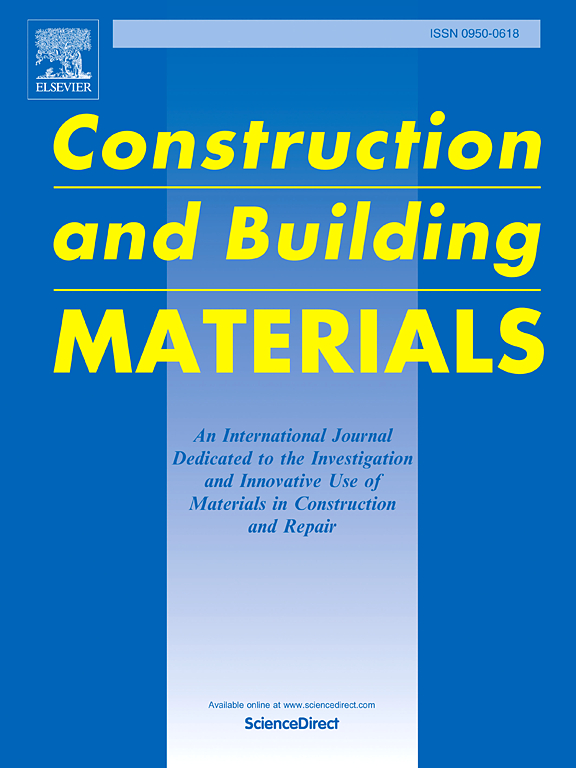Waste glass powder as silica source for the activator in the preparation of alkali activated SiMn slag mortar
IF 7.4
1区 工程技术
Q1 CONSTRUCTION & BUILDING TECHNOLOGY
引用次数: 0
Abstract
The main objective of this work is to improve the performance of alkali activated ground granulated SiMn slag mortars, avoiding the use of waterglass for the preparation of a more sustainable alkali activator. In this work the sustainable activator was used to develop masonry mortars whose binder is formed by granulated SiMn slag as a solid precursor, and an alternative alkaline activator which was obtained from waste glass powder by a hydrothermal process, varying the NaOH concentration, duration and temperature of the process. The mortars samples were characterized for workability, setting time, strength, bond strength (adherence to masonry bricks), shrinkage and porosity. Life cycle analysis was carried out to assess the environmental impact of replacing Portland cement and commercial solutions with the use of SiMn slag and these alternative activators. Mortars manufactured with the alternative activator have similar setting times, lower compressive strength (reaching values between 35 and 44 MPa after 90 days) and greater porosity compared to those manufactured with commercial activators. The different behaviours observed depending on the different alternative activators used can be attributed to the different quantity of Si that each of them presents. All the studied mortars manufactured with an alternative activator have more than sufficient properties to be used as masonry mortars. These mortars are manufactured using a majority percentage of waste (SiMn slag and glass waste as a source of silica for the activator), so they represent a sustainable alternative in terms of reducing raw materials, energy, and carbon footprint in their production.
求助全文
约1分钟内获得全文
求助全文
来源期刊

Construction and Building Materials
工程技术-材料科学:综合
CiteScore
13.80
自引率
21.60%
发文量
3632
审稿时长
82 days
期刊介绍:
Construction and Building Materials offers an international platform for sharing innovative and original research and development in the realm of construction and building materials, along with their practical applications in new projects and repair practices. The journal publishes a diverse array of pioneering research and application papers, detailing laboratory investigations and, to a limited extent, numerical analyses or reports on full-scale projects. Multi-part papers are discouraged.
Additionally, Construction and Building Materials features comprehensive case studies and insightful review articles that contribute to new insights in the field. Our focus is on papers related to construction materials, excluding those on structural engineering, geotechnics, and unbound highway layers. Covered materials and technologies encompass cement, concrete reinforcement, bricks and mortars, additives, corrosion technology, ceramics, timber, steel, polymers, glass fibers, recycled materials, bamboo, rammed earth, non-conventional building materials, bituminous materials, and applications in railway materials.
 求助内容:
求助内容: 应助结果提醒方式:
应助结果提醒方式:


